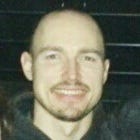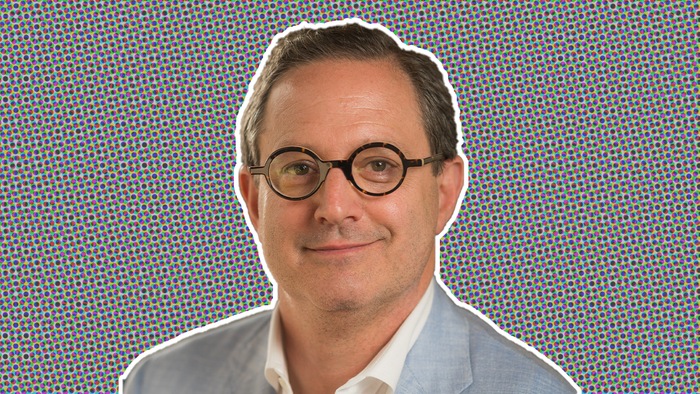
Featured Blog | This community-written post highlights the best of what the game industry has to offer. Read more like it on the Game Developer Blogs.
Summoner: A Goddess Reborn: Steam-rolling through a world of mystery and intrigue
A look at the world of Summoner: Goddess Reborn, a Gamecube port of Summoner 2 (PS2). The imaginative game-world is full of mystery and deception, but the player is encouraged to follow the lead of the proud protagonist and take a brute force approach.

This is a re-post from my blog at gamemakeworld.wordpress.com.
“Summoner: Goddess Reborn” was the 2003 Gamecube re-release of “Summoner 2″ for Playstation 2. It was developed by Volition and Cranky Pants Games, and published by THQ.
WORLDVIEW: Brute-forcing your way through a mysterious world of intrigue.
Many action RPGs inadvertently end up creating this kind of contradiction between the complexity of the plot/characters and the blunt simplicity of the actual gameplay, but S:GR’s worldview works with it rather than against it.
TEXT
The game starts with a creation myth involving a Goddess, Tree, and Tempest, and from there develops its own detailed lore and mythology. Extensive background information about quests and characters is available in the main menu.
Although it takes place in a “medieval fantasy” setting with castles, queens, and magic, S:GR avoids many genre tropes in its naming. “Surdama” is used as a title of status, for example, pain is a type of magic (in addition to more traditional types like fire and ice), and the categories for the game’s monster summons are Blood, Eye, Sand, and Tree. Additionally, the main character’s group of healing skills are called “Necromancy.” Things like this help set the game apart, stimulate the player’s imagination, and create a mysterious, slightly dangerous-feeling game-world.
The main story is full of deception and political intrigue, with many reversals throughout the game where characters switch sides or are not who they first seemed. For example, Sangaril’s backstory is that she came to kill the protagonist Maia as an assassin, but ended up joining her. Nearly every other player character has this kind of edge to them, too:
SPOILERS ALERT
Neru starts as the enemy leader of a group of pirates but later becomes an ally; Morbazon is introduced as a neanderthal-like brute, but he is actually one of the Unseen (god-like beings from another realm); Iari is presented as a sentient robotic weapon, but actually holds the soul of Morbazon’s dying lifemate, another Unseen; and Krobelus starts as an enemy, then joins the party, then turns evil again and must be defeated. This continues beyond the player characters with NPCs like the traitor Surdama Kir.
END OF SPOILERS
The deception and mystery surrounding other characters contrasts sharply with the blunt personality of the heroine Maia, Queen of Halassar. It’s rare to have such a brusk, egotistical protagonist, but Maia marches into each scene insisting that she is the Goddess reborn and can therefore do whatever she wants, taking what’s hers in order to confront the final boss. This is in fact how most RPGs games function, especially in late game- players take a practical attitude in preparation for the final battle, expecting powerful items in return for completing quests. S:GR is rare in that the main character behaves the way the player feels, demanding and receiving her just rewards as Queen and Goddess reborn.
VISUALS
Each player character has a striking and engaging design, from oddly and sparsely armored Krobelus to friendly assassin Sangaril. Most NPCs and enemies (especially bosses) have their own have original designs as well.

Fig. 1: Sangaril, Maia, and Krobelus, from left to right
Though the game starts out in fairly straightforward fantasy environments- a pirate’s island, and the Queen’s castle- each has unusual touches that sets it apart from the average fantasy world. Later environments like the Realm of Twilight, City of Masks, and Wheel of Perduellion are even more imaginative and at times surreal. Their themes of masks and twilight contribute to the worldview of mystery and deception, too.

Fig. 2: Masks in the Wheel of Perduellion (“Perduellion” is a real word that refers to treason in civil law)
GOALS & RULES
The straightforward character development system gives the battle system depth and the characters more individuality. Rather than improving stats such as “strength” and “intelligence,” the player puts points into characters’ Skill Trees (Blunt Weapons, Necromancy, Pain Magic, etc.), making them stronger and unlocking new skills. Due to some of the original concepts and names, it can be unclear what an ability does until it is unlocked, but this adds mystery and discovery to the stream-lined, simple system.
In battle, the player switches between controlling one of three party members while scripted AI controls the others (similar to but years before FFXII). However, in difficult battles, the best approach tends to be to use Maia’s unique ability to transform into a super-powered monster (hence the game’s title) and fight solo. Though a waste of the party system, it felt fitting to storm in as Maia in monster form, let allies fall to the wayside and die, and decimate anything in my way without subtlety or finesse.
Even in combat with all three characters in action, things usually boiled down to button-mashing with minimal concern for timing and strategy. In other words, despite the AI party-based battle system and plethora of special skills, an unsubtle ham-fisted approach usually prevails.
The beautifully rendered worldmap has a relatively small number of locations; however, with its numerous side-quests, the game encourages and rewards backtracking with small surprises.

Fig. 3: Part of the worldmap
Quests often involve lore, riddles, and puzzles, but are sometimes vague and unclear. You may find yourself suddenly stumbling upon the solution to a long-forgotten quest without much idea what’s going on. However, given Maia’s attitude and the game’s worldview, I thought it felt right to randomly find a character who mutters gibberish about some old king, takes a quest item, and then gives you a powerful weapon- you’re the Goddess reborn and you deserve it.
CONTROLS
The menus are well-designed and delightful to use, especially the character equipment screen. Navigation and battle controls are straightforward, with three-hit combo chains in battle that lead to some frantic button-mashing.
SOUND
S:GR’s music involves a lot of percussion and non-Western influences, such as in the Halassar castle theme. The soundtrack makes heavy use of flutes, bells, and drums, giving it a style distinctly different from the synthesized music and Western orchestras that dominate many games. Though no single song stands out in my memory, they were effectively atmospheric and often ominous.
Voice acting is well-done and engaging across the board. Maia sounds proud and arrogant as she marches on her quest to be the Goddess reborn, and the change in one character’s speaking style mid-game is also a nice touch.
WHAT COULD BE BETTER
As I’ve already mentioned, much of what could be considered flaws- a seemingly complex party system that boils down to single player melee bashing, unclear goals in quests, etc.- are redeemed somewhat by the game’s worldview. As another example, you could say that character models are stiff and strange, as one Amazon reviewer did, but the world of S:GR is stiff and strange (hence the mask theme), and I think it works.
The map and camera on the other hand were downright frustrating. I am bad with navigating 3D areas in general, but I found S:GR’s maps especially hard to use, while the camera often swings around at just the wrong times and places, making both navigation and battle more difficult. Strangely, the first battle of the game is one of the hardest due to its taking place on a lurching boat, further compounding camera problems.
Switching between characters in battle can also be clunky as the camera jumps around- I usually stuck with one character unless I needed a specific skill in an emergency.
SUMMARY
Text: Originality in naming works with the extensively catalogued lore to establish themes of deception and mystery, contrasting with the protagonist’s blunt, direct attitude.
Visuals: Character designs are expressive and original. Environments become increasingly imaginative as the game progresses, with a mask theme and other dream-like imagery.
Rules: The stream-lined character development system is engaging and simple to use. The AI-controlled party system was innovative, but it ends up encouraging button-mashing and other ham-fisted techniques.
Controls: Though hampered by an erratic camera, the controls are straightforward with well-done menus.
Sound: Atmospheric percussion music sets a low-key, ominous mood, with excellent voice-acting.
The worldview works well with some of the basic contradictions of the action RPG genre and this game in particular. Thanks in large part to the imaginative setting, story, and characters, Queen Maia’s journey through this world of mystery and deception is a lot of fun.
Read more about:
Featured BlogsAbout the Author(s)
You May Also Like








